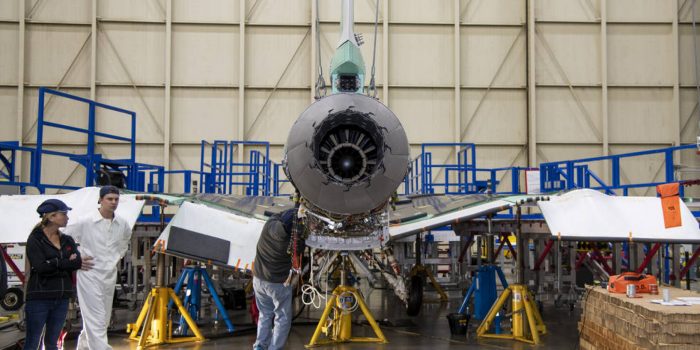NASA has launched its ambitious jet engine, X-59 aircraft that will exhibit the Quiet Supersonic Technology (QueSST).
The space agency has collaborated with Lockheed Martin and General Electric Aviation to make this plan real. This might revive supersonic travel for the general public. Commercial airliners flying over populated areas cannot travel as fast as fighter jets.
This is because of the sonic boom. It involves shockwaves that are created by an object traveling faster than the sound, which has enough energy to shatter windows and sound like thunderclaps to the human ear.
Lockheed Martin started working on the X-59 after it was awarded a preliminary design contract in 2016. The timeline was extended to a $247.5 million build and delivery contract in 2018.
The Lockheed Martin-designed aircraft will deliver 75 Perceived Level decibels (PLdB) on the ground, which is far lesser than the 105-110 PLdB of the Concorde.
NASA’s X-59 is a vital project for bringing back supersonic travel for commercial airlines. Denver, Colorado-based Boom Supersonic is a private enterprise looking to achieve that.
Currently, the focus of airlines and the industry is to become more fuel efficient and have sustainable energy options. This makes the idea of going back to supersonic speeds a little less pressing.
This is why NASA’s efforts are so important for supersonic travel. The X-59 aircraft, which was earlier scheduled to take the first flight in 2022, still needs to be ground tested.
NASA aims to carry out test flights over communities in the U.S. by 2025. After that, the data and technology will revive supersonic travel with quiet sonic booms.


